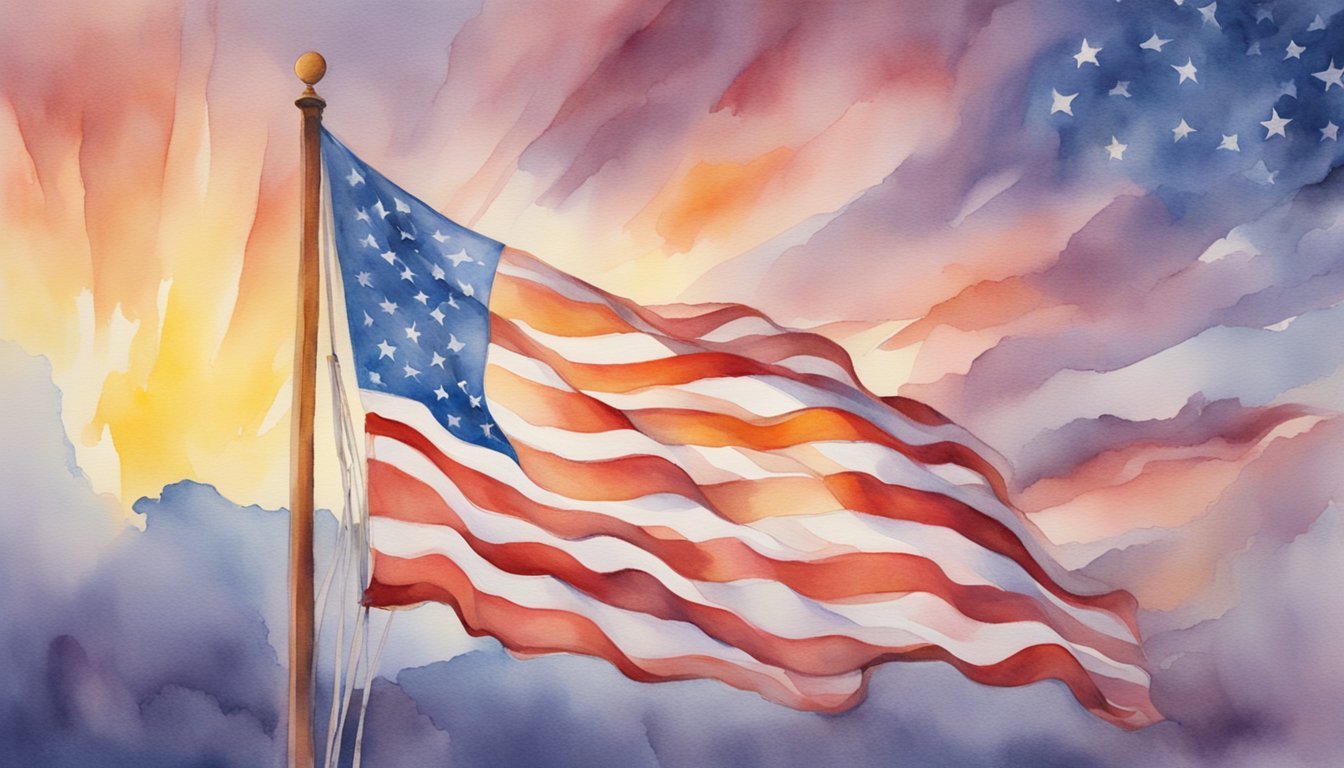History and Significance of Old Glory
Old Glory, the affectionate nickname for the American flag, carries a rich history and significant symbolism. Each aspect, from the nickname’s origin to its prominence during the Civil War, ties back to the deep sense of patriotism and unity the flag inspires.
Origins of the Nickname
The term “Old Glory” was first applied to the American flag by a sea captain named William Driver in the early 1800s. He named his flag Old Glory upon seeing it majestically waving in the breeze and took it with him on his naval voyages. The flag became an emblem of his deep-seated patriotism, a symbol that would echo through American history. For more details see The True Story of a Flag Named Old Glory.
Old Glory During the Civil War
During the Civil War, which began in 1861, Old Glory represented the Union side, symbolizing a unified nation undivided by the secession. It became a powerful symbol of American resilience and unity against division and conflict. The flag, by then synonymous with the term Old Glory, was a significant morale booster for the Union troops. Learn more about its importance at The History of Old Glory: A Story of Patriotism, Defiance, and….
William Driver and His Flag
William Driver’s connection to his beloved flag didn’t end at sea. After he retired, he moved to Nashville, Tennessee, taking the flag with him. The Stars and Stripes, another name for the American flag, gained further prominence when Driver displayed Old Glory outside his home, which became a symbol of hope during turbulent times. His flag was an enduring testament to Americanness, steadfast in the face of adversity. More can be learned about William Driver’s devotion to his flag by visiting Old Glory – Wikipedia.
Physical Attributes and Symbolism

The United States flag, widely known as “Old Glory,” embodies a rich tapestry of history and symbolism represented by its colors and evolving design. Each feature of the flag carries distinct meanings, rooted in the American experience.
Design Evolution and Meaning
The design of the U.S. flag has undergone several changes since its inception, reflecting the nation’s growth. Initially, it bore only 13 stars and stripes, representing the original colonies. Today’s flag showcases 50 stars, indicating each state, while the 13 stripes remain, preserving the memory of the nation’s early founding.
Colors and Their Symbolism
The colors of the flag are laden with meaning—red signifies hardiness and valor, white symbolizes purity and innocence, and blue represents vigilance, perseverance, and justice. These colors unite to form a visual testament to the ideals of freedom and democracy.
Preservation and Display
Proper preservation and display of the flag are considered acts of respect and patriotism. The Star-Spangled Banner is preserved at the National Museum of American History, symbolizing both the longevity of the nation’s ideals and the enduring nature of “Old Glory” as an icon of the United States.

